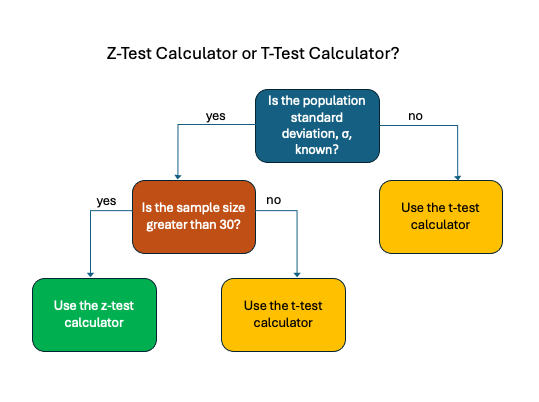When to Use the T-Test Calculator or the Z-Test Calculator
Case #1 – Use the T-Test calculator under the following conditions:
- You do NOT have the population standard deviation (σ).
- The sample is a simple random sample.
Case #2 – Use the T-Test calculator under the following conditions:
- You have the population standard deviation (σ).
- The sample size, n, is less than or equal to 30.
- The sample is a simple random sample.
Case #3 – Use the z-test calculator under the following conditions:
- You have the population standard deviation (σ).
- The sample size for your data is sufficiently large (n > 30).
- The sample is a simple random sample.
Notice that in all cases, the sample should be a simple, random sample. In summary, use the z-test calculator when you have the population standard deviation (σ) AND n > 30. If either of those conditions are false, use the t-test calculator.
You can also refer to this diagram for help choosing the correct test calculator for the problem you are working on,

